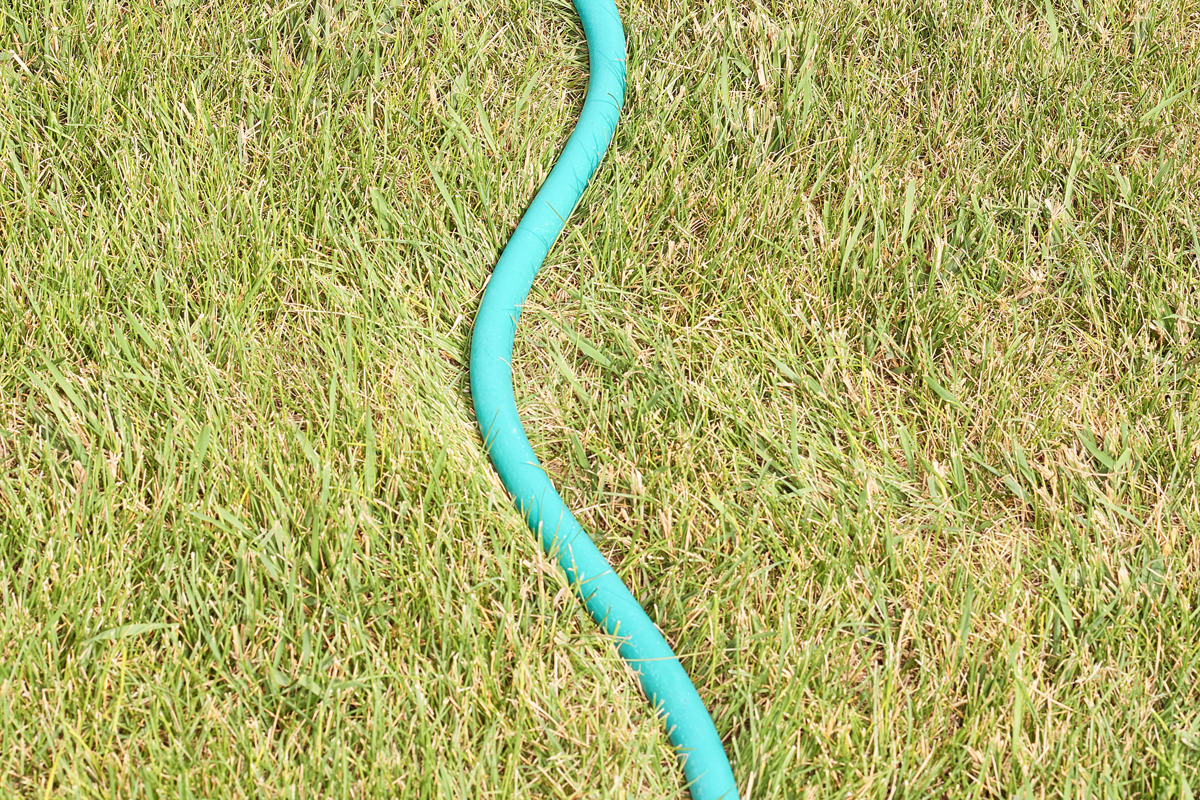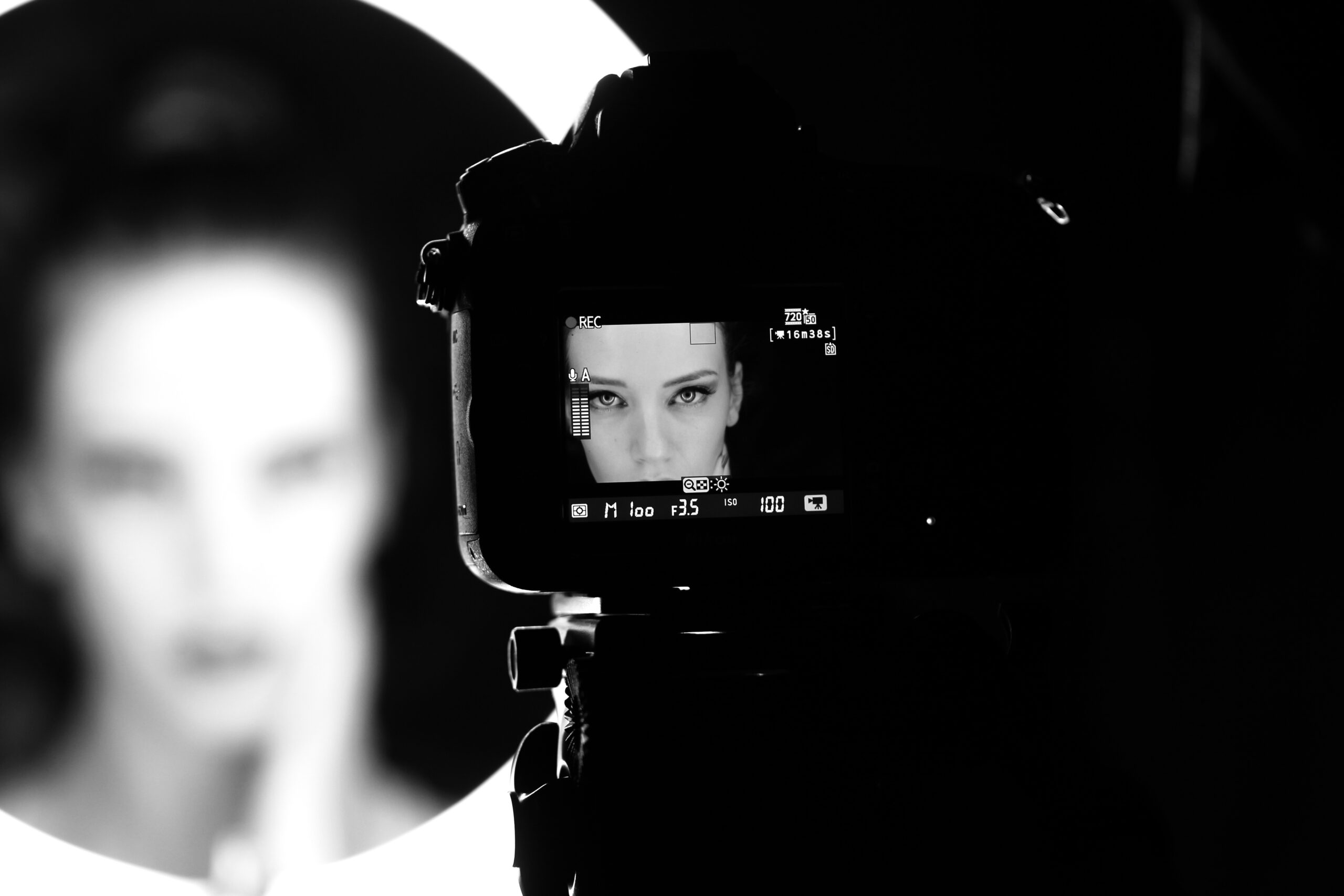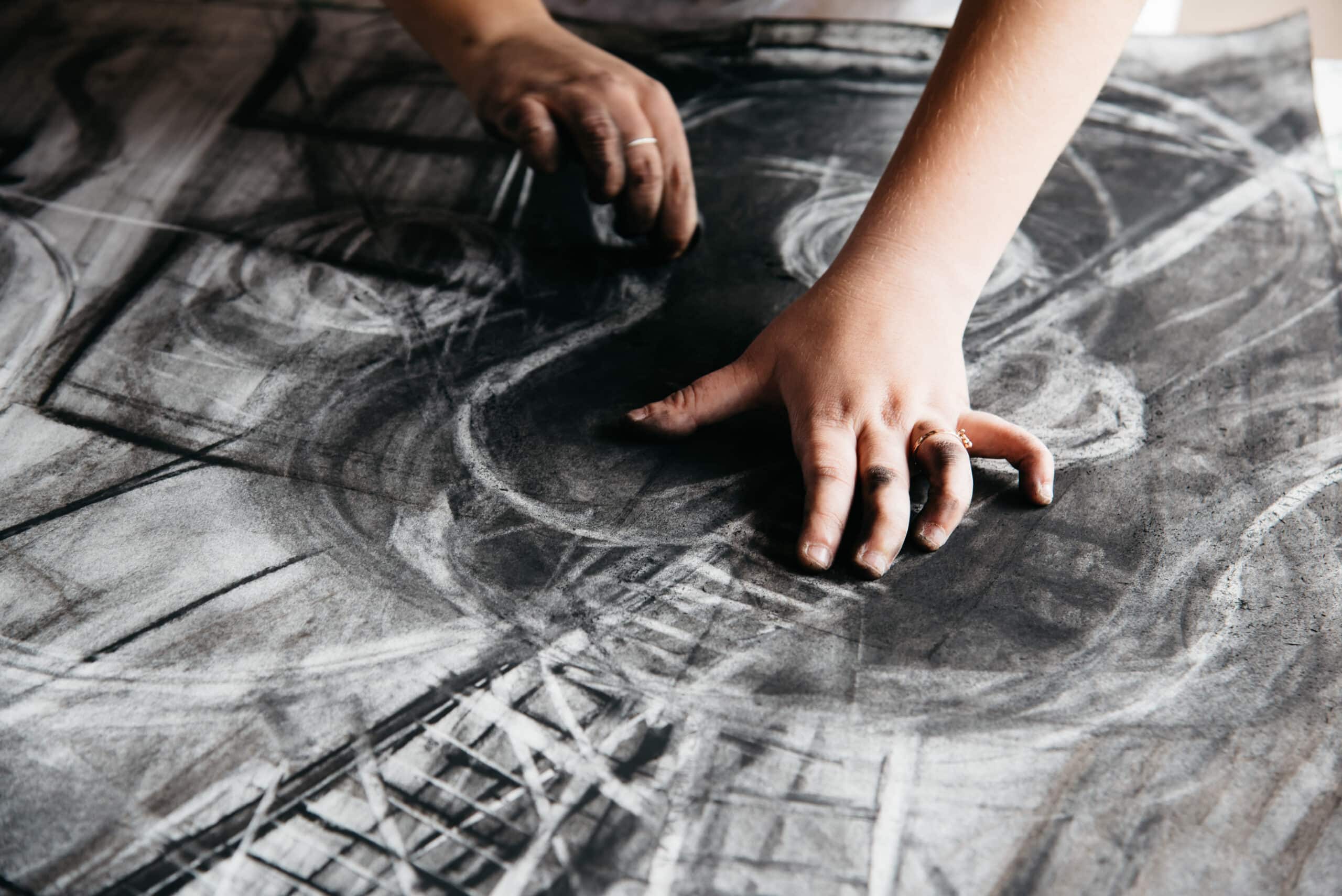Mirrorless or DSLR: the great camera debate. Which side are you on? Likely you’re here to figure that out, and the decision will be based on a variety of factors. Mirrorless and DSLR camera bodies are fantastic digital camera options both of which have a wide variety of interchangeable lenses to choose from. They both produce high-quality images, far superior to point-and-shoot cameras. Both have different characteristics that may suit where you’re at, or your own personal likes and dislikes, better. While mirrorless cameras are a newer technology there are advantages to both this new mirrorless system as well as DSLRs. Despite how long both technologies have been out there, they have a plethora of lenses and price points. Choosing a camera is a big decision and you want to make sure you’re getting the right tool for your photography, so let’s dive in and figure out what you’re looking for!
What is a DSLR?
Almost a classic at this point, a DSLR, or digital single lens reflex, is a digital camera with a removable lens. It has a mirror inside the device that directs light from the lens to a prism, through the viewfinder, and into your eye. This results in a true optical preview of the scene for the photographer. The image sensor, the light sensitive bit, is located behind the mirror box – the part of the camera that contains the shutter and mirror. When you press the shutter button, the mirror flips up and out of the way, the shutter opens and closes based on the speed you’ve set it to, and light pours in onto the image sensor to capture the photograph. The shutter sound you hear when you take a photo is the combination of the mirror flipping out of the way and the shutter curtain moving simultaneously.
A DSLR also has the option to change out lenses. At present, they are the most widely used camera bodies, with a variety of different lenses to choose from. Obviously with this ability DSLRs are extremely versatile and can be used for all sorts of applications and photography types.
What is a mirrorless camera?
As the name suggests, mirrorless cameras don’t have a mirror, compared to the DSLR. These types of compact system cameras (CSC) came out in the mid-2000s, and their technology has only gotten better and better. Working without a reflex mirror or prism cuts the size and weight of the camera body down noticeably. Mirrorless cameras work by passing light directly from the lens right onto the digital sensor, previewing your image on an electronic viewfinder (EVF) and digital display, usually an LCD screen. This preview is different from the one shown with a DSLR because it’s a digital feed of what the camera is seeing. On one hand, it gives you a better idea of what the final image will look like because of the ability to enable exposure simulation, but the EVF also has its drawbacks, such as lagging slightly or blackout between frames when taking photos. With mirrorless cameras, when you’re ready to take the shot, and the shutter button gets pressed, the shutter curtain snaps into action at the speed you’ve set it to, ensuring the image sensor is exposed for the correct amount of time. Technology and accessories have over time improved on mirrorless cameras as well, giving more capabilities and options for photographic output.

Photo by Andrew S
Why choose a DSLR?
The first DSLR prototype was created in 1986 and has only seen further and further improvement since. These camera bodies are sturdy and have a great grip to make you feel more secure in shooting photos and video. They offer good value for money as well as a myriad of options for lenses, camera models, and other accessories. Their long battery life is also a bonus. If you’ve ever had a device die at a crucial moment, you know why this is so important! Compared to traditional point-and-shoot cameras, the image quality on DSLRs is also far superior, resulting in more clear and more detailed photos. This is due to the fact that DSLR cameras have larger image sensors and better processing power. With superior technology in image capture and focus, DSLRs also work better in low light. There’s clearly a plethora of advantages to DSLR cameras! But let’s understand a little further with the following points.
1. Optical viewfinder
DSLR cameras have an optical viewfinder (OVF), which is the component of the camera that allows a photographer to look through to view the scene about to be captured. What makes the viewfinder on DSLRs unique is the mirror and prism system inside the camera that allows this scene to be viewed. The DSLR’s OVF shows a clear, true-to-life view of the scene being captured, and includes a HUD with important information like exposure settings and autofocus information – it can’t, however, show you exposure simulation. An OVF also saves your battery life, as they are not digital, contrary to mirrorless cameras.
2. Lens availability
If you’re considering a DSLR and take into consideration how long the technology and camera format have been around, you have nearly 30 years worth of lenses to choose from! This wide and well-established camera body gives you a massive range of interchangeable lenses for you to choose from – prime lenses, zoom, macro, tilt-shift, and everything in between. Bonus, you can likely get them for reasonable prices because of the plentiful supply and secondary market options.
3. Familiar format
DSLRs were a real game-changer when created. This digital camera has been around for decades and has a variety of accessories and bodies to choose from. Because of this, the function and format may even be familiar to you. With a solid size and grip, you may be more comfortable holding and shooting with this body as well. When you look through the viewfinder, you’ll also notice settings you might be familiar with from previous cameras, such as aperture, shutter speed, ISO, and autofocus points.
4. Lower entry costs
Considering how long DSLR cameras have been around, and the variety of accessories that have been made for these cameras over the years, you’re going to have more options to choose from when you buy – plenty of supply. If you’re just entering the digital camera arena or you’re new to photography, you may want to choose a model that has a lower entry point cost, DSLRs are a great option for that reason. Plus, you can focus on acquiring lenses that fit on your DSLR and a mirrorless if you choose to switch to that format in the future.
5. Better battery life
The battery life of a DSLR may be one of its most impressive qualities. Even entry-level DSLRs have fantastic battery life, yielding up to 1000 shots before needing a recharge, and pros can run up to 4000 shots! Why might this be? The DSLR’s viewfinder is optical, meaning it requires less battery life compared to a mirrorless camera, which has an electronic viewfinder and does require battery power. Mirrorless cameras may only yield a few hundred shots before needing a charge.

Photo by Luke Braswell
Why choose a mirrorless camera?
Many would say mirrorless technology is, at least for now, the future. The industry is making the most advances in this area and is creating more and more mirrorless systems compared to DSLRs. The portability, that is the decreased size and weight that came from not needing a mirror and prism system like a DSLR, was a game changer for many photographers. Especially with the continued advances in lens technology, if a lighter and smaller camera is important to you, mirrorless may be a top contender. This, combined with the silent shutter, image stabilization, autofocus (speed and accuracy, thanks!), and shooting speed has made mirrorless cameras an impressive system for any photographer. Check out some of the specific ways a mirrorless camera may be the body for you.
1. Image stabilization
Many mirrorless cameras have fantastic in-body image stabilization. For many without a steady hand, or anyone really, this is a big deal. The in-body image stabilization can correct for camera shake up to several stops meaning photographers can use slower shutter speeds without worrying about blurry shots. Not having the reflex mirror and prism system that DSLR camera bodies have has more advantages than just a compact and lightweight camera body. It also means the camera is less susceptible to shaking, which many photographers can attest to, makes the job much easier! Less shaking means having more control over your output – improved image quality, and images that look more professional.
2. Portability
Mirrorless cameras are both lighter and smaller than DSLR camera bodies. This allows for better portability. Having a camera body that is more lightweight and compact can ease many aspects of photography, and lend itself better to various types of photography, such as street, travel, event, and wedding photography. Saving enough room to be able to pack one more lens in your bag might make all the difference on your next project! Or save you from some fatigue compared to hauling around a big heavy camera body all day long.
3. Autofocus
Mirrorless cameras also have the game on lock when it comes to autofocus, zeroing in on both accuracy and speed. Some of the earliest mirrorless cameras used contrast detect autofocus technology, which operates similarly to how cameras on phones focus. The lens will focus and pick a point in the scene where the image is at its sharpest (or highest contrast), making the autofocus the most accurate. Newer mirrorless cameras now use both contrast detect autofocus and phase detect autofocus, also used by professional-grade DSLR systems. Phase detection calculates two light sources coming into the lenses, which allows for lightning fast, accurate autofocusing. Best of both worlds!
4. Frames per second, continuous shooting
The simplified mechanism within mirrorless cameras allows for faster shooting when taking a burst of images (aka continuous shooting), which may also be an advantage for you depending on your photography subjects. Frames per second, or FPS, is a measure of how many still photos can be captured in one (1) second while holding your shutter down. If you’re shooting sports or wildlife, or anything fast-moving for that matter, a high FPS may be beneficial. Mirrorless cameras have got your back on this front. Some newer mirrorless cameras can shoot up to 30 frames per second RAW photos.
5. Silent shutter
Mirrorless cameras are also extremely quiet when shooting. Nothing is worse than an important speech or wedding ceremony being drowned out by a burst of loud shutter sounds. Whether it’s a minor irritation or a huge disruption, as a photographer you want to do your best to avoid it. Having fewer mechanical parts inside the camera in action during a shot allows for more discretion and a quieter shoot. If you’re shooting while a film is being shot, during a wedding ceremony, or during an interview, you may want to consider a mirrorless camera.
6. Image preview
Mirrorless camera systems have a serious advantage when it comes to image preview for a few reasons. You can see virtually all settings being applied to your image in real-time. In a sense, there is an amount of post-processing that happens to your scene when viewing it through the EVF. For example, you can view effects applied to the image in real-time, such as black and white. This is fantastic for pros as well as a great way for beginners to learn about how settings change your image.

Photo by Josue Prince Photography
What are the main differences between DSLR and mirrorless cameras for video?
Both mirrorless and DSLR cameras are great for video, they produce professional quality footage. Both allow for interchangeable lenses, so you can get the lens you need, although as mentioned, you may find more variety in lens options for DSLR cameras. Both DSLR and mirrorless generally have a solid grip, so you have a good handle on your device, and come with an LCD monitor for you to view your video, however, the EVF on the mirrorless camera may provide more versatility to preview. DSLR cameras do provide exposure simulation with live view on the rear LCD as well.
Most advantages the two cameras have in still images can apply to video as well – both have good autofocus including focus tracking, but for this function, mirrorless cameras win out here. Newer mirrorless cameras allow for superior tracking, as mentioned earlier, but the main advantage is that the image sensor plays a larger role in the autofocus performance. This means mirrorless cameras have more autofocus points to work with and more data in order to accurately focus or predict where to focus. Image stabilization is also superior in mirrorless, which will be useful in video production as well. Mirrorless cameras make for a great run-and-gun setup thanks to all of the built-in features, whereas DSLRs would need additional accessories to get the same job done.
Most professional-grade DSLR and mirrorless cameras also come with the manufacturer’s LOG profile installed so you can more easily color grade your footage. Mirrorless cameras seem to have the edge when it comes to resolution as some newer models are producing impressive 8K footage whereas DSLRs are typically at 4K or 6.6K on the top end.
If video is your focus for your future, and you have some budget, consider mirrorless. Think about what preferences might top your list, and make your own informed and personal decision. Hey, you can always sell your gear and trade in for something different in the future too.

Photo by Arun Clarke
Conclusion
As you’re probably finding, there are a variety of factors when determining which digital camera is right for you, DSLR or mirrorless. If your budget is top of mind, second-hand DSLRs are good value, and the options you have for equipment and price points are plentiful. Mirrorless cameras tend to be more expensive, even used ones, as they came out more recently and have more current technology. If budget is less of an issue, and a lightweight, compact camera tops your list of must-haves, maybe you’ll want to consider a mirrorless camera.
We surveyed nearly 4,000 photographers in our most recent State of the Photography Industry Report 2022 and the results were compelling. The top four camera models used split out equally among DSLRs (Canon EOS 5D Mark IV and Nikon D850) and mirrorless (Canon EOS R5 and Sony A7R IV). Preference for gear was best seen based on photographer specialty. For example, mirrorless was more heavily utilized among documentary, lifestyle, and travel photography, whereas DSLR was preferred among sports and food photographers, as well as certain types of portrait work.
If you want to compare camera models based on specs to help you choose the best option for you try this side-by-side camera comparison tool.
So there you have it! Plenty of things to think about, but we hope you’ve learned a few things to make your own informed decision when it comes to mirrorless or DSLR.












